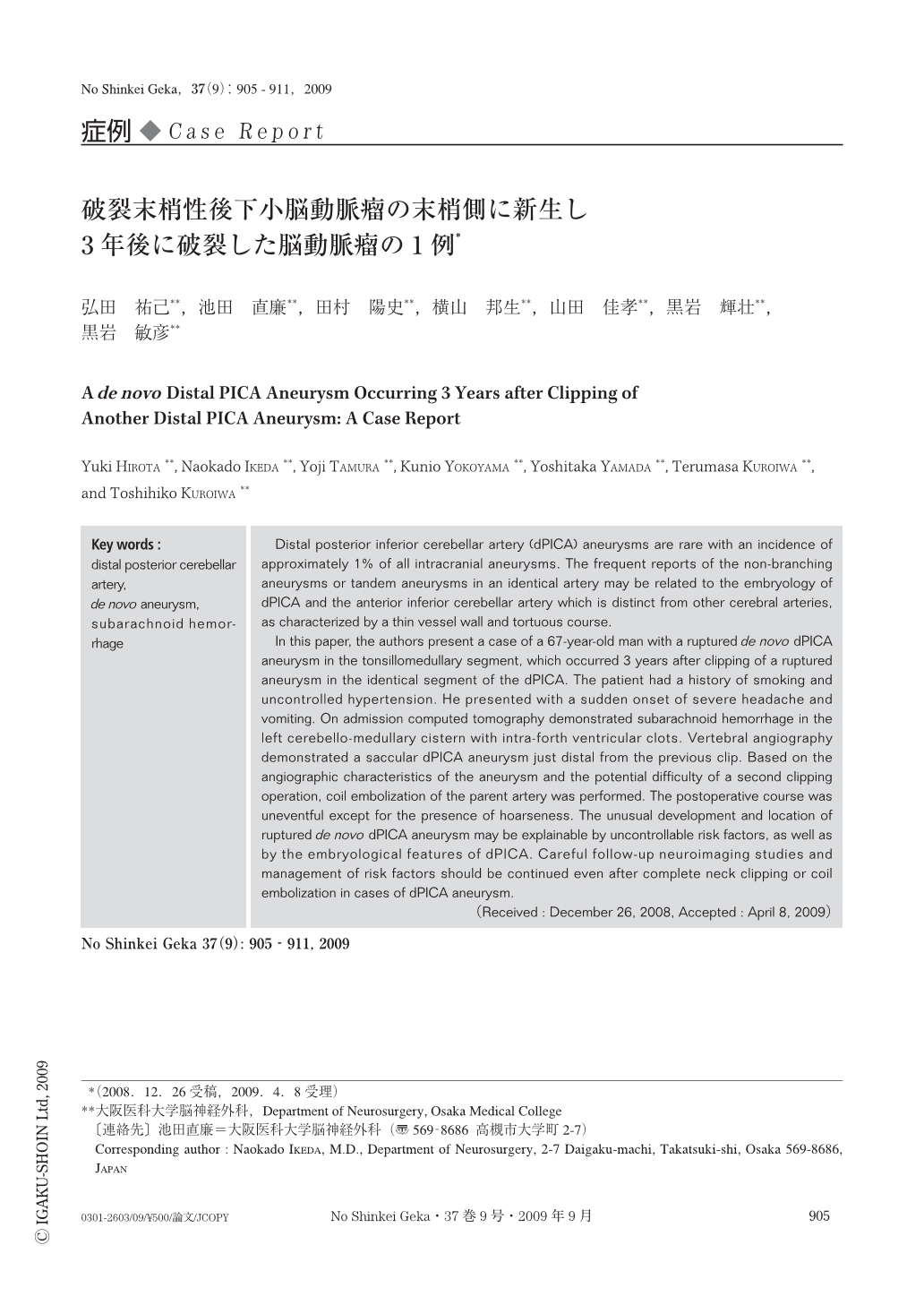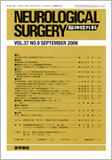Japanese
English
- 有料閲覧
- Abstract 文献概要
- 1ページ目 Look Inside
- 参考文献 Reference
Ⅰ.緒言
末梢性後下小脳動脈(distal posterior inferior cerebellar artery:以下dPICA)動脈瘤は頭蓋内動脈瘤の約1%であり,比較的稀な疾患である.PICAや前下小脳動脈(anterior inferior cerebellar artery:以下AICA)の末梢側に発生する動脈瘤は,他の頭蓋内動脈の末梢側に発生する動脈瘤とは異なる特徴を有するとされている.今回われわれは,破裂dPICA動脈瘤に対してクリッピング術を行い,3年後にさらに末梢側の血管ループに新生し破裂したdPICA動脈瘤の1例を経験した.非常に稀な経過であり,その発生機序を中心に文献的考察を加えて報告する.
Distal posterior inferior cerebellar artery (dPICA) aneurysms are rare with an incidence of approximately 1% of all intracranial aneurysms. The frequent reports of the non-branching aneurysms or tandem aneurysms in an identical artery may be related to the embryology of dPICA and the anterior inferior cerebellar artery which is distinct from other cerebral arteries, as characterized by a thin vessel wall and tortuous course.
In this paper,the authors present a case of a 67-year-old man with a ruptured de novo dPICA aneurysm in the tonsillomedullary segment,which occurred 3 years after clipping of a ruptured aneurysm in the identical segment of the dPICA. The patient had a history of smoking and uncontrolled hypertension. He presented with a sudden onset of severe headache and vomiting. On admission computed tomography demonstrated subarachnoid hemorrhage in the left cerebello-medullary cistern with intra-forth ventricular clots. Vertebral angiography demonstrated a saccular dPICA aneurysm just distal from the previous clip. Based on the angiographic characteristics of the aneurysm and the potential difficulty of a second clipping operation,coil embolization of the parent artery was performed. The postoperative course was uneventful except for the presence of hoarseness. The unusual development and location of ruptured de novo dPICA aneurysm may be explainable by uncontrollable risk factors,as well as by the embryological features of dPICA. Careful follow-up neuroimaging studies and management of risk factors should be continued even after complete neck clipping or coil embolization in cases of dPICA aneurysm.

Copyright © 2009, Igaku-Shoin Ltd. All rights reserved.


